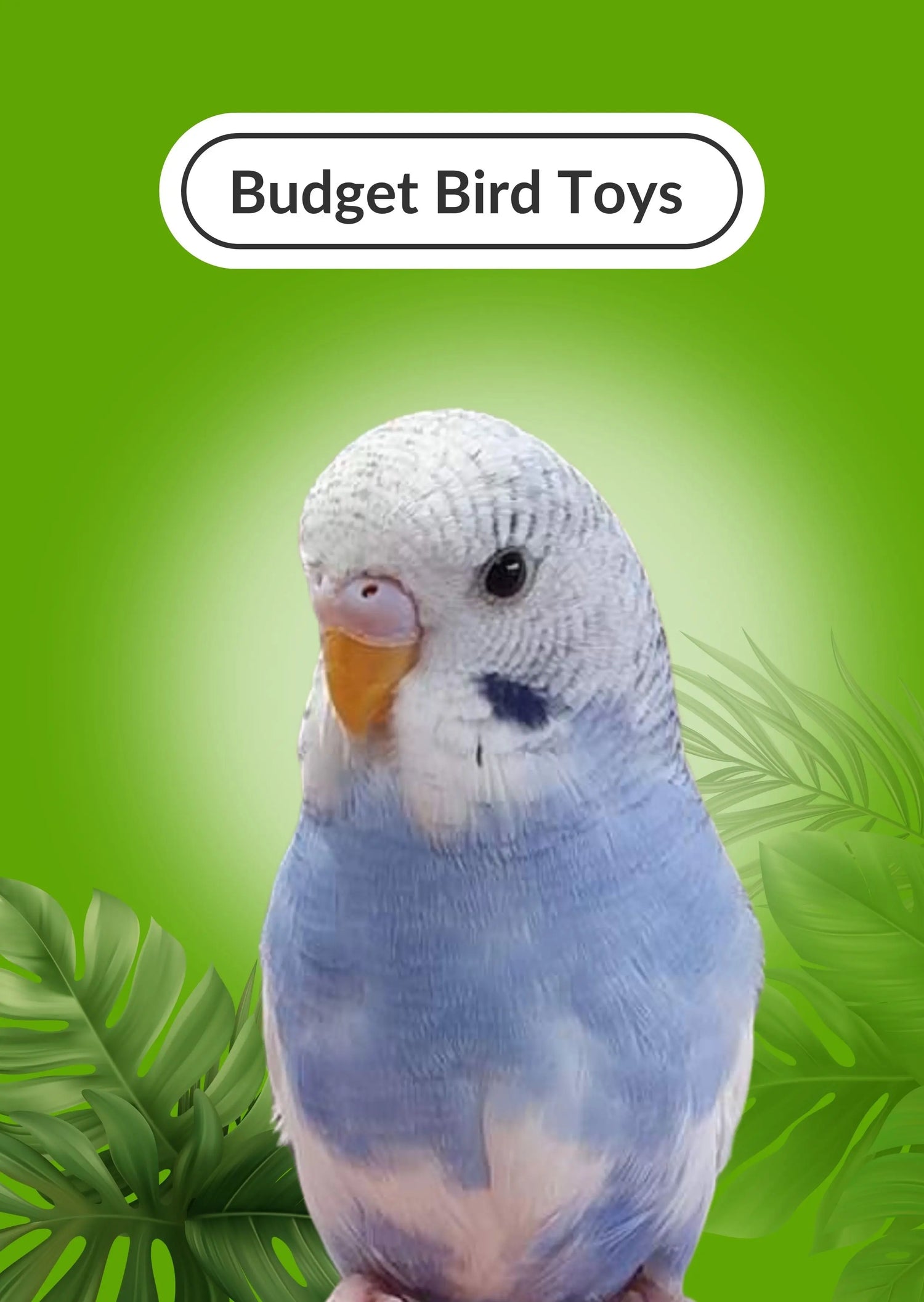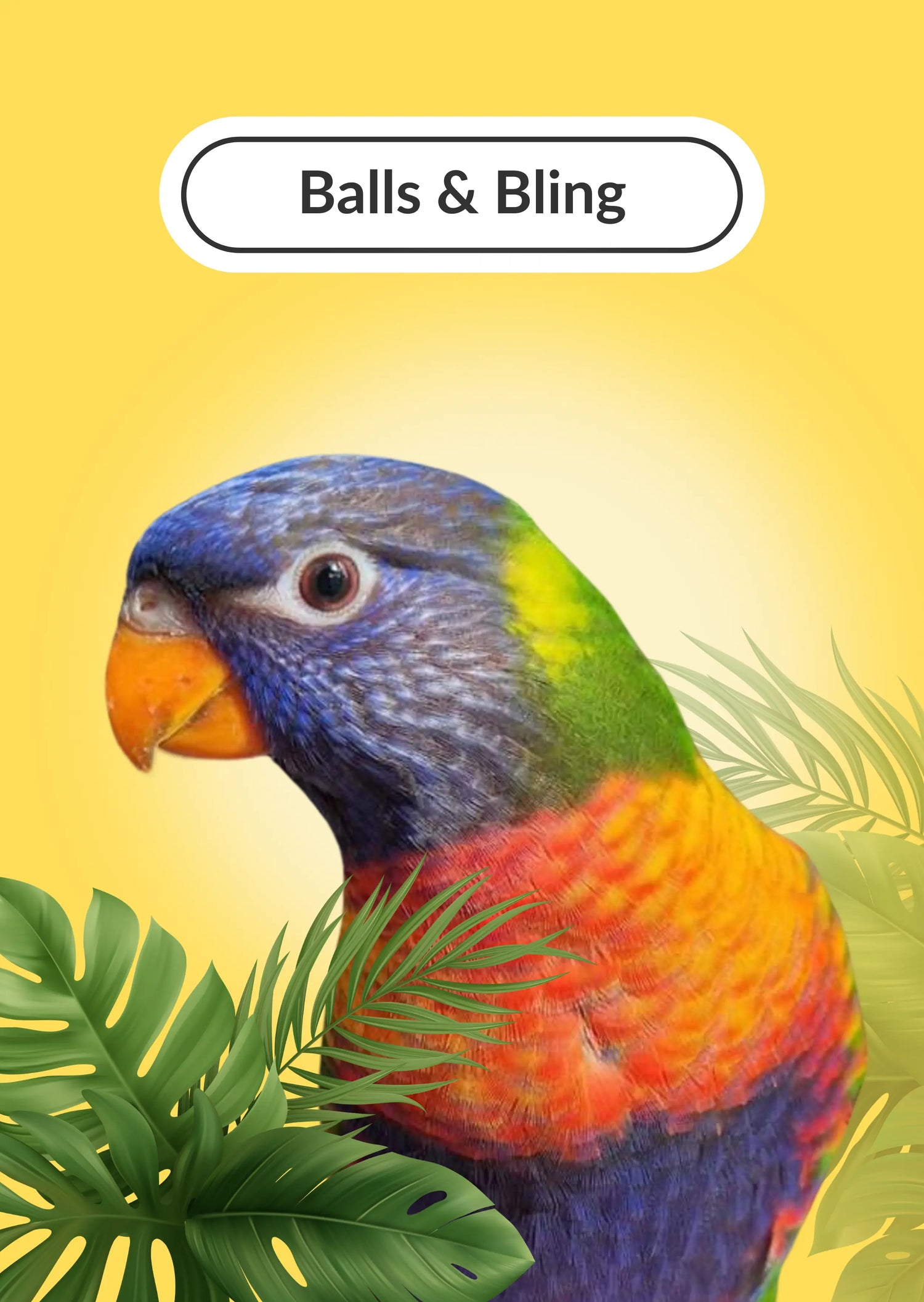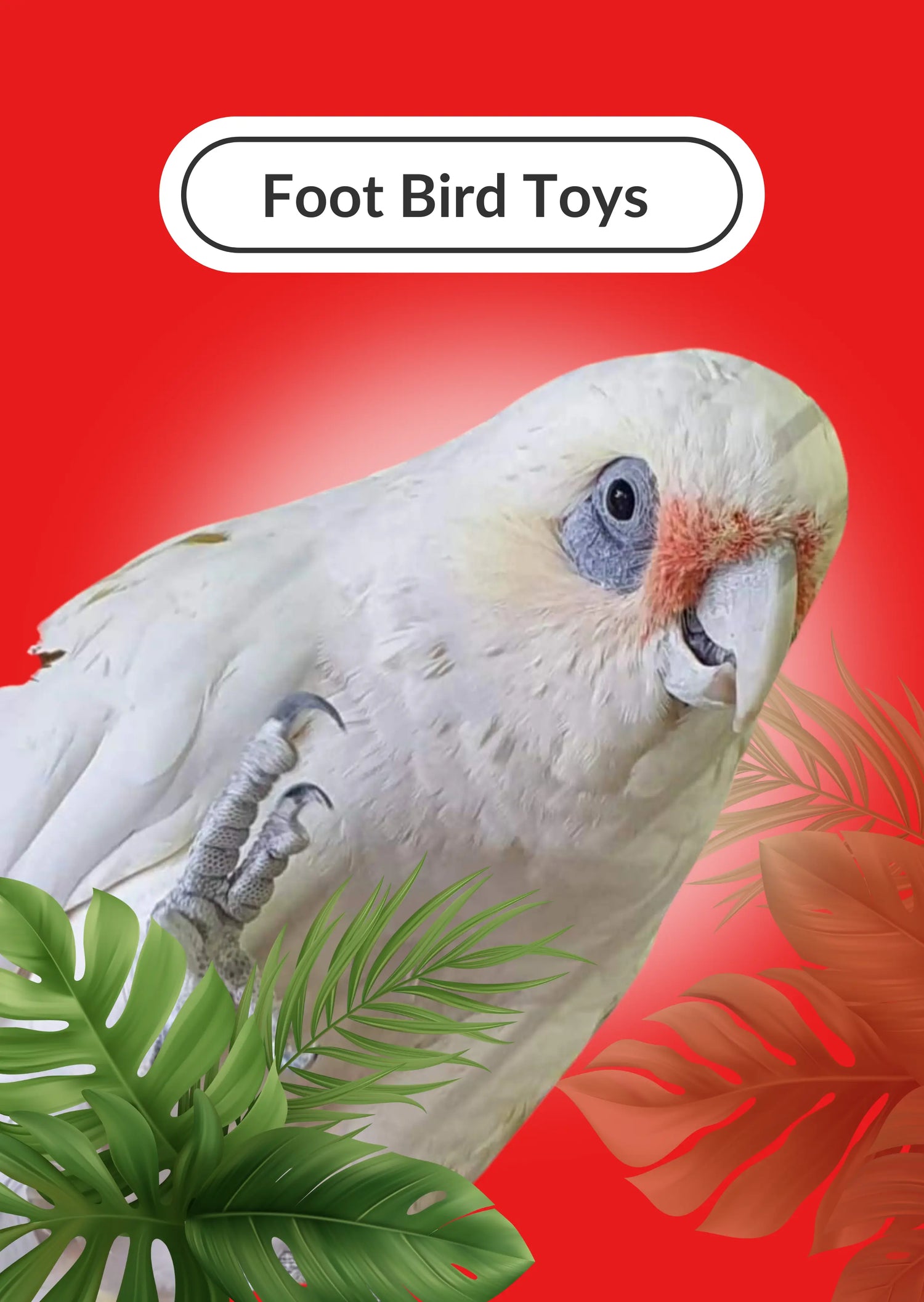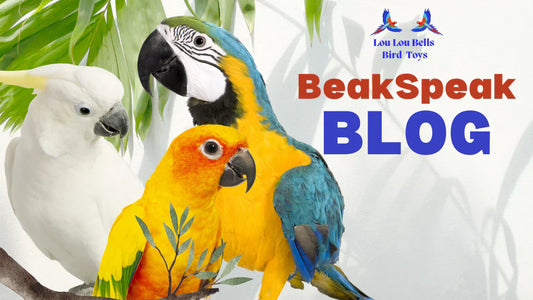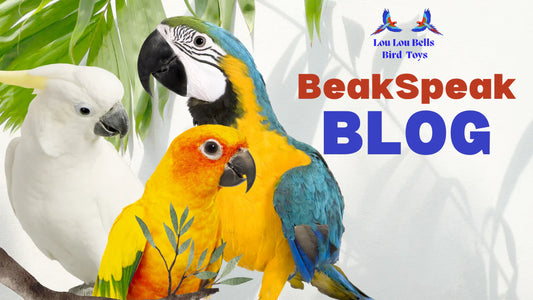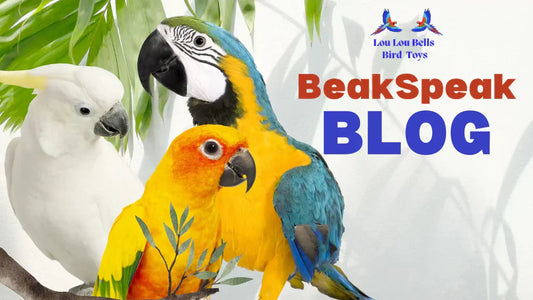What’s the Difference Between a Budgie and a Parakeet?
Bird lovers often hear “budgie” and “parakeet” used almost interchangeably. But are they really the same? Or are there important differences that matter—especially if you’re choosing one as a pet, or making decisions about toys, cage setup, diet, or companionship? So we ask; What’s the Difference Between a Budgie and a Parakeet?
If you keep birds, or are thinking of getting one, this guide will clear up the confusion. I’ll walk through what makes a budgie a budgie, what “parakeet” means, how they compare in behaviour, care, lifespan, and what you need to know if you want to give yours the best life (yes, including toys).
What’s a Budgie?
- Full name: budgerigar (scientific name Melopsittacus undulatus)
- Native to Australia. In the wild they live in drier, open woodlands, scrub, grasslands. They cope with hot, arid conditions and move nomadically depending on food and water.
- Size: fairly small, usually about 18 cm long or around 7–8 inches from beak to tail tip for most domesticated budgies.
- Colours: wild budgies are green and yellow, with black scalloped or wave‐like markings on wings, back, nape. In captivity there are many colour mutations—blue, white, violet, pied, etc.
- Beak, cere, sexual dimorphism: adult budgies show differences in their cere (the fleshy area above the beak) — males and females have different cere colours. Juveniles less distinct.
- Behaviour: very social, intelligent, playful, relatively easy to tame. Good mimicry (some budgies can learn words, whistle).
What Does “Parakeet” Mean?
- Parakeet is not one specific species. It’s a general term (umbrella) for many species of small-to-medium parrots that have long tail feathers and relatively slender bodies.
- There are over 100 species (or even more, depending on how you count) that fall under “parakeet” classification. Some are very small (like budgies), others larger.
- Examples of parakeets besides budgies: Indian ring-necked parakeet, Monk parakeet, grass parakeets, etc. Behaviour, size, appearance vary widely among them.

Key Differences (and Overlaps)
Since a budgie is a type of parakeet, many of the similarities are expected. But the differences matter in practice—especially for pet owners in Australia. Here are several aspects to compare.
|
Feature |
Budgie (Melopsittacus undulatus) |
Other Parakeets (various species) |
|
Species status |
One specific species |
Many species (“parakeet” is a broad group) |
|
Size |
Smaller, more consistent size ranges (≈7–8 in / 18 cm) |
Can range from similar small sizes up to much larger depending on species |
|
Origin / Natural habitat |
Native to Australia, adapted to arid / semi-arid grasslands, dry scrub |
Native to many parts of the world: India, Asia, Africa, Americas, etc. Habitats vary (forest, savannah, semi-arid, even urban) |
|
Colour / Mutations |
Wide variety under domestication; wild type pretty fixed (green & yellow etc.) |
Different species have their own natural colours; domestication may create mutations but often limited by species genetics |
|
Lifespan |
Typically ~7-15 years in captivity (can vary) |
Some parakeet species live longer; large or robust species may have different lifespans; also depends on care |
|
Care / Space |
Needs a good sized cage, toys, social interaction, time out of cage. Smaller size means less space needed than larger parakeets but still important. |
Depending on species, may need more space, stronger perches, more environmental enrichment, possibly more noise or social needs |
|
Temperament |
Social, friendly, playful, can be confident around humans if hand-raised or socialised early |
Temperament varies: some species are more shy, some very vocal, some more territorial; need species-specific research |
|
Vocalisation / Speech mimicry |
Many budgies are good mimics; can learn whistles, words |
Some species better than others; larger parakeets often louder; abilities vary widely among species |
Common Misconceptions
-
Misconception: “Budgies and parakeets are totally different birds.”
Actually: every budgie is a parakeet. But not every parakeet is a budgie. -
Misconception: “Parakeet” in Australia always means budgie.
In everyday speech, yes—many people say “parakeet” when they mean budgie. But avicultural / zoologically, “parakeet” includes many different species. It helps to clarify which species you’re talking about. -
Misconception: All parakeets behave like budgies.
Not true. Some parakeet species have very different care needs, social structure, noise level, dietary needs, etc.
Why These Differences Matter (for Pet Owners)
Choosing a bird is not just about which is cute. If you get it wrong, you might end up with a bird that’s unhappy, sick, or burdensome. Here’s what to think about.
Space & Environment
A budgie will need less space than, for example, a larger parakeet species. But even budgies need:
- A cage that allows wing extension and some flight.
- Toys, perches, swings etc to keep feet and beak busy. (That’s where having good bird toys matters.)
- Safe environment (no drafts, correct temperature, avoiding toxic substances).
If you're considering a non-budgie parakeet, check how much space it needs, flight time, climbing space etc.
A great starting point is our budgie toys collection, filled with safe options sized perfectly for smaller parrots.
Noise & Social Needs
Budgies are social. They like company — either human, or other budgies. They chatter, whistle, sometimes mimic. Their voices are relatively soft compared to larger parrots, but still audible.
Some parakeet species are louder. Some are more territorial. Some may require being in pairs (or in groups) to be mentally healthy.
Diet
Budgies eat mostly seed mixes, supplemented with fresh veggies, some fruit, and possibly pellets. Clean water is essential.
Other parakeets may have dietary requirements depending on species: some need more fruit, more specific nutrients, sometimes even insects. Always check species specific guides.
Lifespan & Commitment
Budgies can live up to 15 years (in good care). Some parakeets may live longer; bigger species may require longer commitment, more veterinary costs.
If considering a non-budgie parakeet, think: “Am I ready for this sort of lifespan, space, expense?”
Health Issues
Budgies are generally hardy, but like all birds they suffer if conditions are poor: bad diet, lack of space, dirty cages, no social interaction can lead to stress and illness.
Other parakeets might have species-specific vulnerabilities (respiratory issues, feather problems etc).
Similarities You’ll Find Useful
Because budgies are parakeets, a lot of what applies to parakeets in general applies to budgies. Useful overlap means what you might learn about one helps with the other.
- Social behaviour: parrots are social birds. Enrichment, companionship, mental stimulation are essential.
- Diet basics: seeds, vegetables, clean water, occasional fruit etc.
- Need for enrichment: toys, chewing materials, mirrors, swings etc help prevent boredom and destructive behaviour. (Lou Lou Bells makes toys that many budgie owners and parakeet owners find useful.)
- Handling & training: patience, positive reinforcement work well. Birds respond to consistency.
What “Budgie vs Parakeet” Means for Bird Toys (Lou Lou Bells Perspective)
Since Lou Lou Bells Bird Toys is focused on toys and accessories, there are some direct implications from the budgie/parakeet question:
- Size of toys: Budgies are small; toys need to be appropriately sized (watch gaps, bar spacing, size of perches, holes etc). A budgie toy that’s too large or heavy could injure or discourage a small bird.
- Material: safe, non-toxic materials, easy to clean. Small birds are more at risk if things are painted with bad coatings, or wires are too thin and sharp, etc.
- Variety: because budgies/parakeets are intelligent and need stimulation, toys that offer different textures, noises, shapes are great. For example, wood, natural fibres, bell, mirror, puzzle style.
- Replacement & sanitation: toys wear out; they accumulate droppings etc. Replace worn-out pieces. Clean often.
- Budgies love toys that are sized just right for their small beaks and feet. You can find plenty of safe and fun options in our budgie toys collection.
Case Studies: Budgies vs Other Parakeet Species
To make it more concrete, here are a few examples of different parakeet species and how they compare to budgies. (All approximate; individual birds differ.)
- Budgie (Melopsittacus undulatus)
- Size: ~18cm; weight small; very manageable.
- Sociality: high. Usually thrives in pairs or groups; enjoys human contact.
- Noise: moderate, pleasant chirps, whistles.
- Indian Ring-necked Parakeet
- Larger body, longer tail; needs more space.
- Distinct calls, louder. Some can mimic speech well.
- May be more demanding in terms of interaction, socialisation.
- Monk Parakeet (Quaker parrot)
- More robust, larger; builds nests; very sociable.
- Needs strong toys, bigger perches; more mental stimulation.
- Grass Parakeets (various Australian species)
- Some similar green/yellow colouring; some more subtle plumage.
- May have different behaviour (flight patterns, social structure) based on wild habitat.
These comparisons show that while budgies are great “entry level” parakeets, other parakeets bring both rewards and extra requirements.
Practical Tips If You’re Deciding Between a Budgie and a Parakeet
If you’re in the market for a feathered friend, or already have one and are considering getting another, these questions help you make a good choice.
- How much space have you got? Can the cage be large enough, can it be placed in a room where the bird can safely fly outside the cage sometimes?
- How much interaction time do you have? Are you going to socialize it often? Teach it, play with it?
- How much noise/habit are you okay with? Some owners are sensitive to bird chatter, especially early morning or evening.
- What’s your budget for care (food, vet visits, equipment)? Larger or more exotic parakeets may cost more.
- Do you want a bird that mimics speech or whistles? Budgies often do quite well; other parakeets vary.
Quick FAQ
Q: Are budgies good for beginners?
A: Yes. Friendly, hardy, and affordable. Pair them with a few small bird toys and they’ll keep busy for hours.
Q: Can budgies live with other parakeets species?
A: Possibly. It depends on the species, temperaments, size, and individual birds. Introductions must be gradual. Ensure cage size and resources (food, perches) are sufficient to avoid conflict.
Q: Do budgies live shorter lives than bigger parakeets?
A: Not always, but often smaller birds have shorter lifespans; however, care plays a large part. Good diet, hygiene, mental stimulation, vet oversight matter a lot.
Q: What are the signs of a healthy budgie or parakeet?
A: Bright eyes, clean feathers, active behaviour, eating regularly, clear breathing (no wheezing), normal droppings. If something seems off (fluffed up feathers, lethargy, poor appetite), consult an avian vet.
Why Budgies Are Special (and Loved)
Even though they’re just one of many parakeet species, budgies hold a special place.
- Because they’re native here in Australia, many enthusiasts (and the wild populations) are part of the country’s natural heritage.
- Their adaptability: wild budgies survive in harsh inland climates. As pets, they adapt well to domestic settings.
- Their playful personalities: for many owners the joy of their chirps, antics, wing-stretches, social nature is a delight.
- Price and availability: relatively affordable, lots of information and support (bird clubs, vets, forums) for buds and their needs.
Sources and Further Reading
- Budgerigar page on Wikipedia (Melopsittacus undulatus) gives good background on wild type, taxonomy. Wikipedia
- Parakeet general page, listing many species and definition. Wikipedia
- BCSA Australia “Are Budgies Parakeets? Understanding the Difference” gives a clear, local perspective. bcsa.com.au
Conclusion
If you were wondering whether to use “budgie” or “parakeet,” or trying to choose between different birds, here’s the bottom line:
- Budgie = one specific species of parakeet.
- Parakeet = many species, budgies included.
From a pet-owner’s view, understanding that means you can choose more wisely: pick the right size, right species, right toys, right care. And whether you buy bird toys from Lou Lou Bells Bird Toys or are already outfitting your feathered friend, knowing these differences helps you give a happy, healthy bird a good life.


